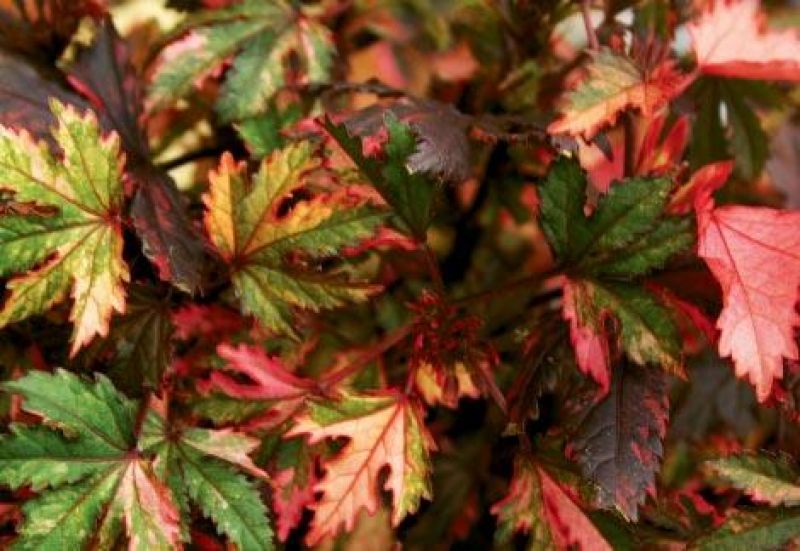
Does the mere thought of summer’s heat have you and your blooms wilting? Plant this unique hibiscus that thrives in hot and humid climates. This shrub-like annual is a fast and easy grower that can reach four to six feet tall in one season, giving near instant gratification to the most impatient gardener. Its bold leaves—ranging from deep burgundy and rich purple to even a coppery hue—resemble those of Japanese maples, adding elegance and texture to a formal garden or serving as a perfect backdrop for a cottage-style cutting bed.
While Hibiscus acetosella is grown mainly for its gorgeous foliage, it also offers up the bonus beauty of a velvety bloom later in the season. Both flowers and foliage are edible, delivering spectacular lemon flavor and texture to salads. This hibiscus should be treated as an annual; however, if winter is mild, it may reward the Charleston gardener by reemerging in the spring. It is easily propagated by vegetative cutting, so be sure to take fresh cuttings in the fall to carry over into the spring.
D‘Haight Ashbury’
This recent, naturally occurring mutation of the ‘Maple Sugar’ cultivar was named for the famed San Francisco “hippie district” due to its tie-dye look. This color variation in its foliage allows it to be easily paired in the landscape or a container with showy annuals such as pentas and petunias. Its maroon-colored bloom appears in the late summer and early fall.
‘Red shield’
For a quieter palette, try this older variety—with its glossy yet textured burgundy leaves and a bloom that ranges from cream to mauve—that looks beautiful on its own.
Hardiness: Zones 8a-11
Light: Full sun to partial shade
Soil: Fertile and well-draining
Water: Twice a week; if planted in a pot, increase the water as the plant increases in size.
Maintain: Pinch back new growth when tender to increase fullness.
Fertilize: Bimonthly with balanced fertilizer